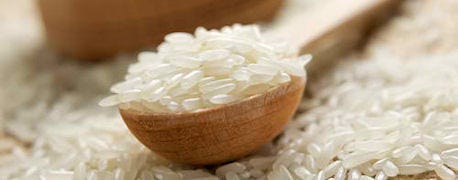September 10, 2013

The Food and Drug Administration this month released complete data on the prevalence of arsenic in rice, finding that any levels of arsenic in the rice tested is too low to cause harm to Americans' health.
The data completes data from preliminary tests first released by the FDA in September, 2012. It also serves as a follow-up to a Consumer Reports evaluation issued last year that urged caution in eating rice products, claiming an "alarming" amount of rice and rice products contained abnormal levels of arsenic.

Report completes nearly year-long look at levels of arsenic in rice and rice products
"The FDA has been monitoring arsenic levels in rice for more than 20 years and has seen no evidence of change in levels of total arsenic in rice," an agency statement said. In total, FDA tested 1,300 samples, including the 200 samples tested in 2012.
According to the FDA, arsenic is naturally occurring in water, air, soil and foods. It may be present as either inorganic arsenic (the most toxic form of arsenic) or organic arsenic.
The FDA testing included various types of rice grain and rice products such as infant and toddler cereals; pasta; grain-based bars; snacks, such as rice cakes; cookies and pastries; desserts and puddings; and beverages, including beer, rice wine and rice water.
Taken together, FDA said the samples cover most types of rice grain and rice-based foods and beverages consumed in the United States.
FDA retains earlier recommendations
After releasing results of the initial 2012 arsenic study, FDA recommended that consumers vary their grains and eat a well-balanced selection of foods – the same recommendation they released following this month's full report.
Consumer Reports, which last year recommended reduced rice consumption, instead noted that it now "share(s) the agency’s recommendation that consumers should diversify the grains in their diets."
But the group also said that the 2013 data was similar to data released last year, and called for additional testing of childrens' products.
“Our review of the FDA’s results shows they are comparable to those in our 2012 study, and in some cases the levels found by the agency were higher than ours," said Dr. Urvashi Rangan, Director of Consumer Safety and Sustainability at Consumer Reports. "This was true in the case of rice beverages used as milk replacement, which underscores Consumer Reports’ advice that children under the age of 5 should not have rice drinks as part of a daily diet."
FDA confirmed it intends to address concerns about arsenic in rice products designed specifically for children through further testing -- a proposition that USA Rice Federation, a coalition of several rice growers groups and the USDA Rice Council, said should not be a concern for those who eat rice products or feed their children rice products.
"While there is inorganic arsenic in rice and rice products, it is at a level that should be safe for consumption across the population. Diets that follow the AAP guidelines include a variety of foods and a variety of grains and remain a healthful approach to eating for children and adolescents," explained Stephen R. Daniels, M.D., Ph.D., chair of the American Academy of Pediatrics Committee on Nutrition.
Despite the concerns about childrens' rice products, USA Rice commended the FDA on taking additional steps to follow up from last year's report.
“FDA has provided American consumers with renewed assurances that there is no need to change a well-balanced diet that includes rice, which it notes is ‘a life-long dietary staple for many people,'" a Federation statement noted.
FDA will also be completing a risk assessment to consider how much arsenic is consumed from rice and rice products, and whether there are variations in health effects for certain segments of the population.
You May Also Like




